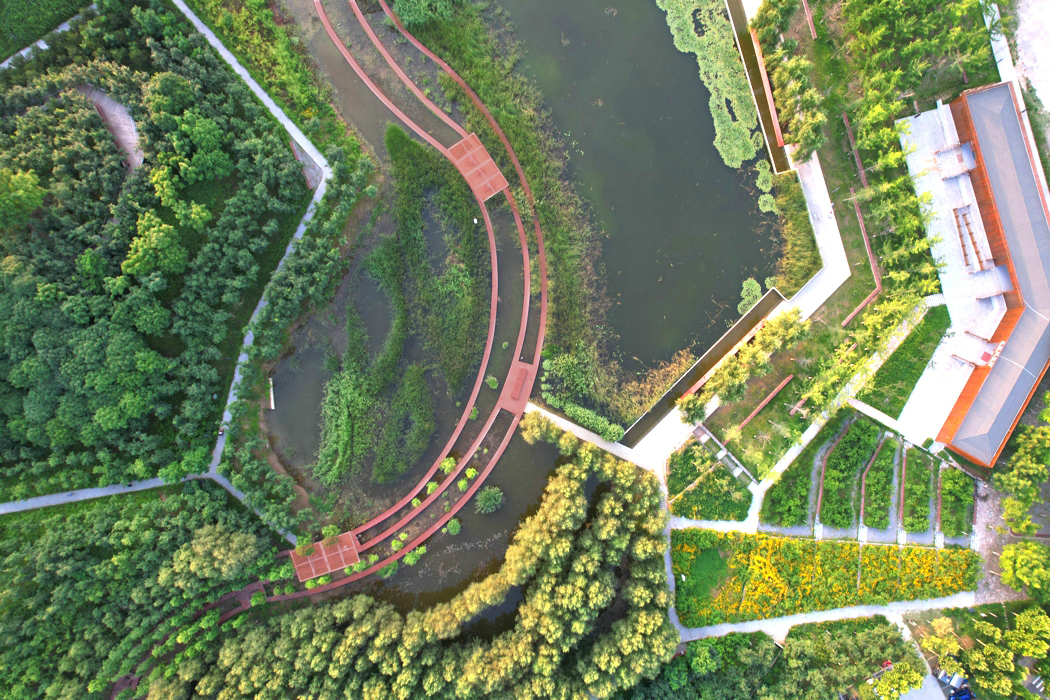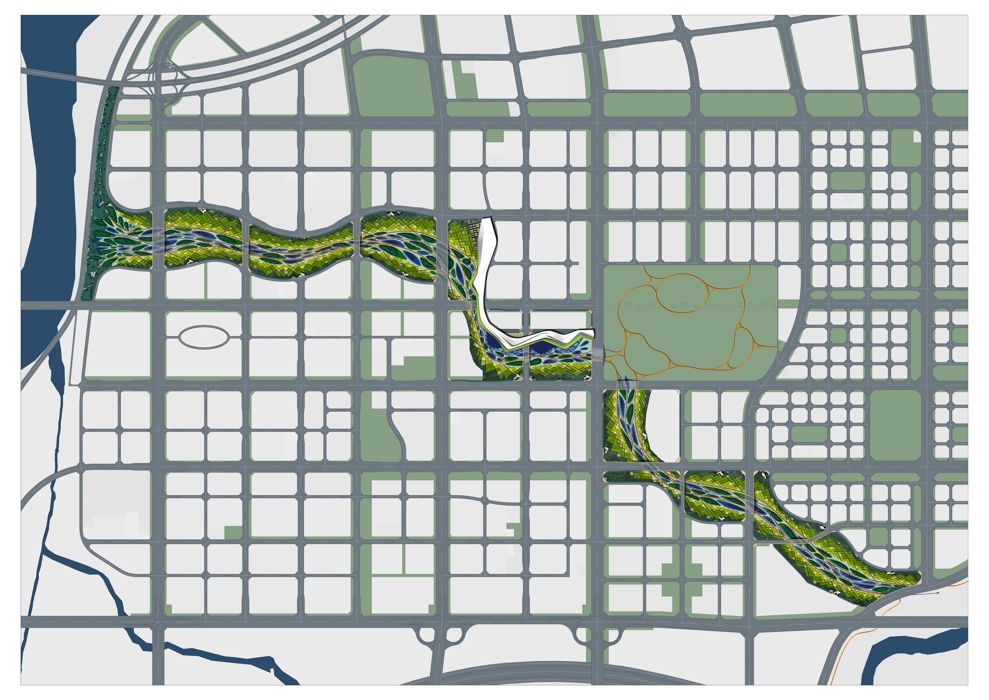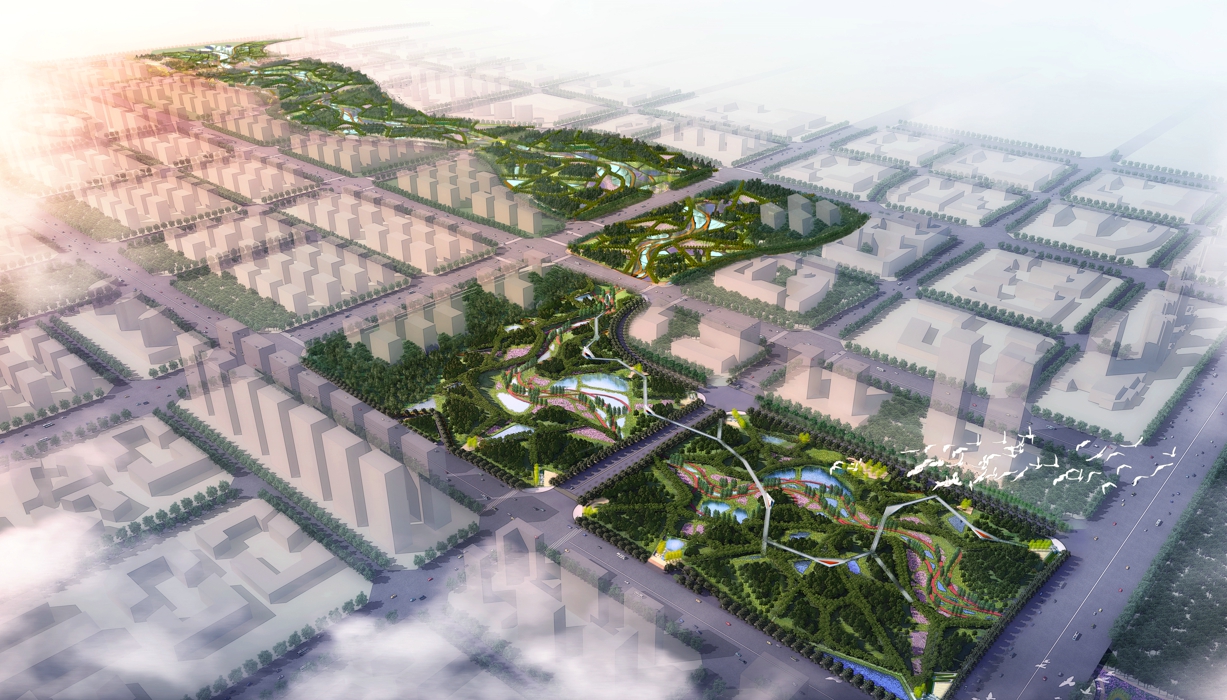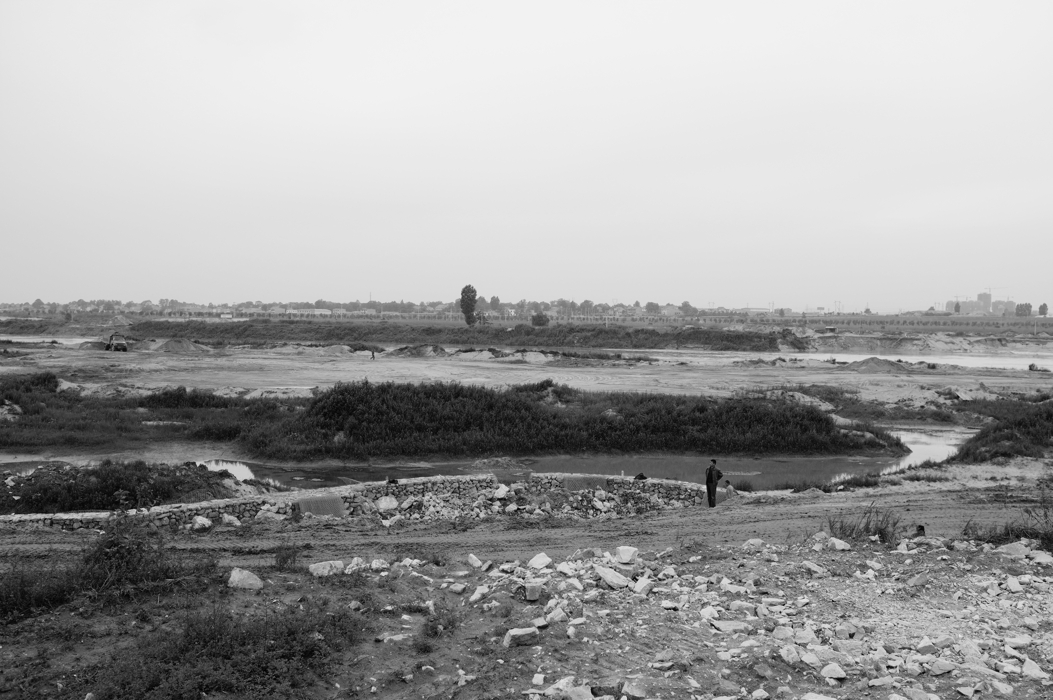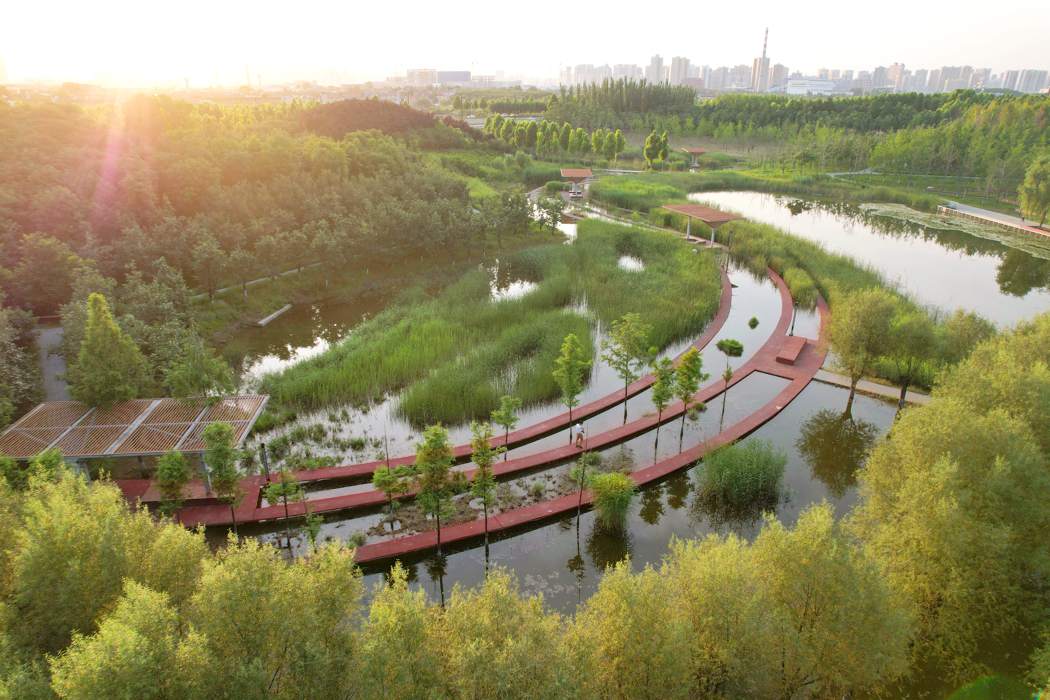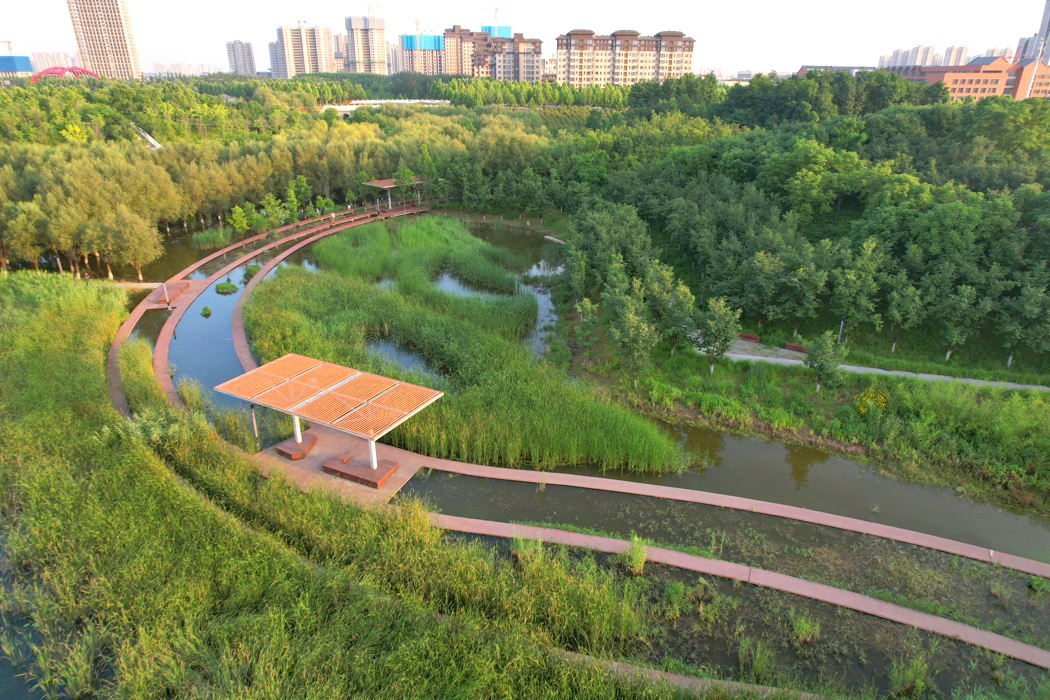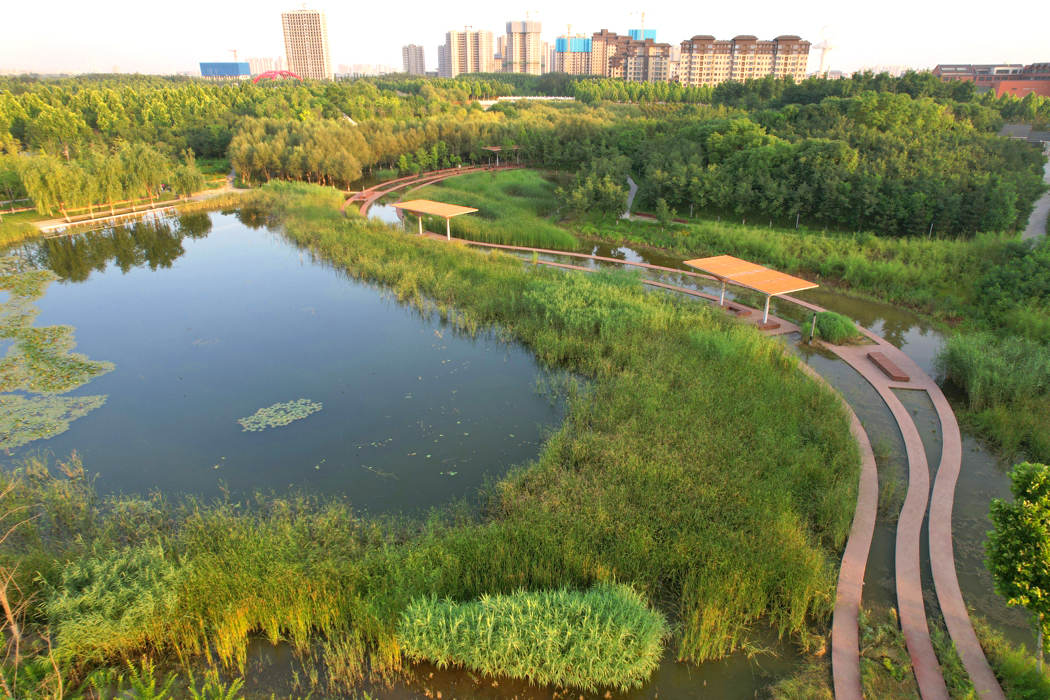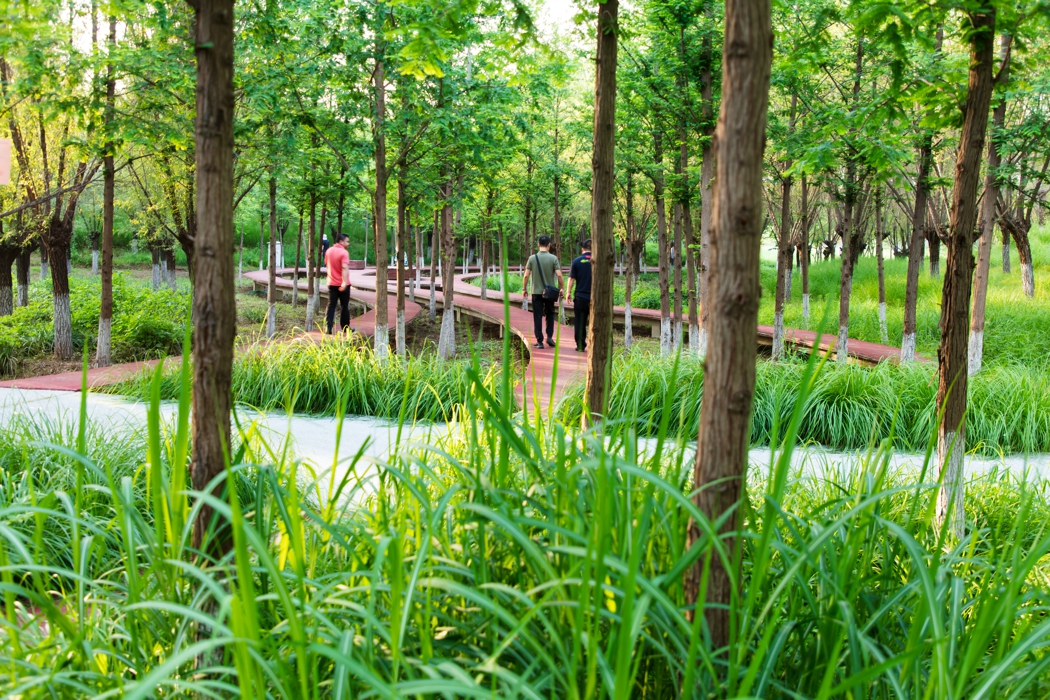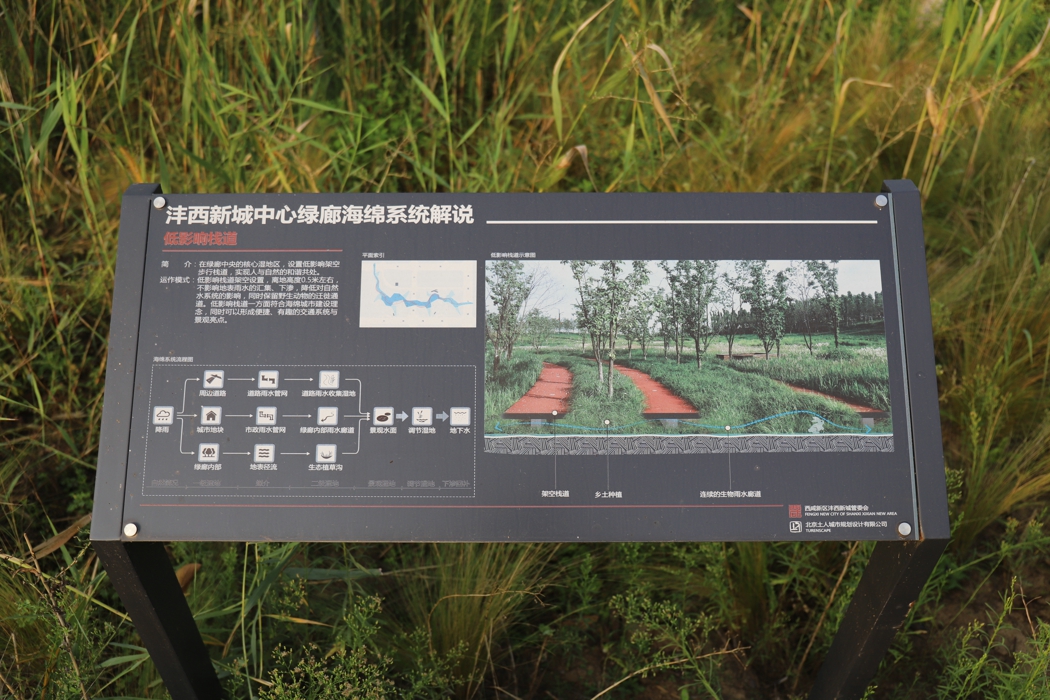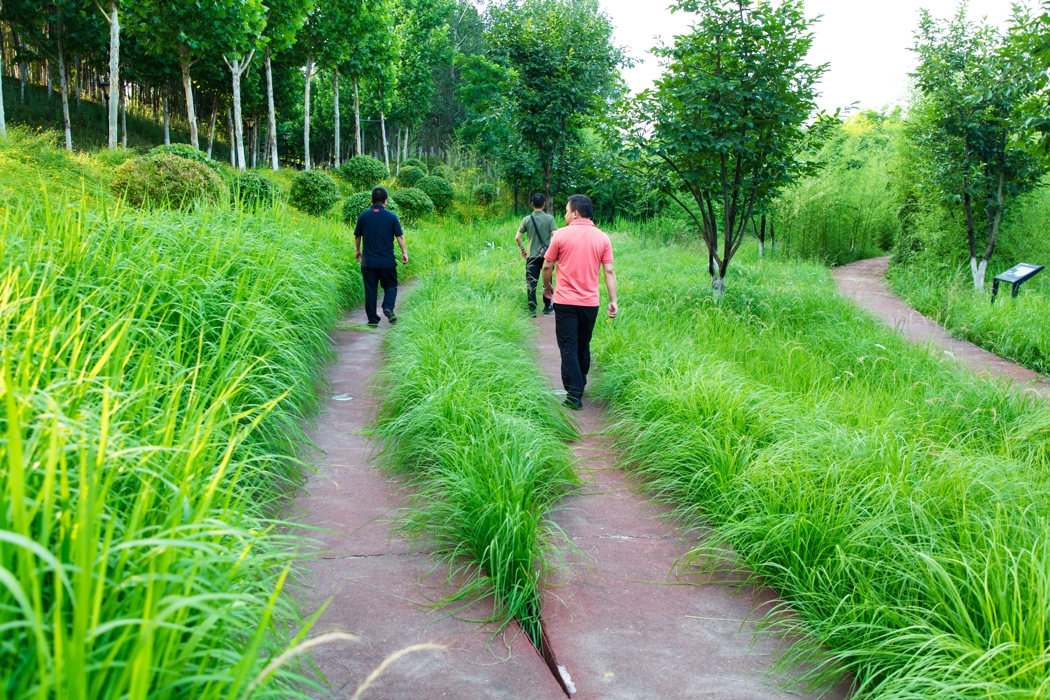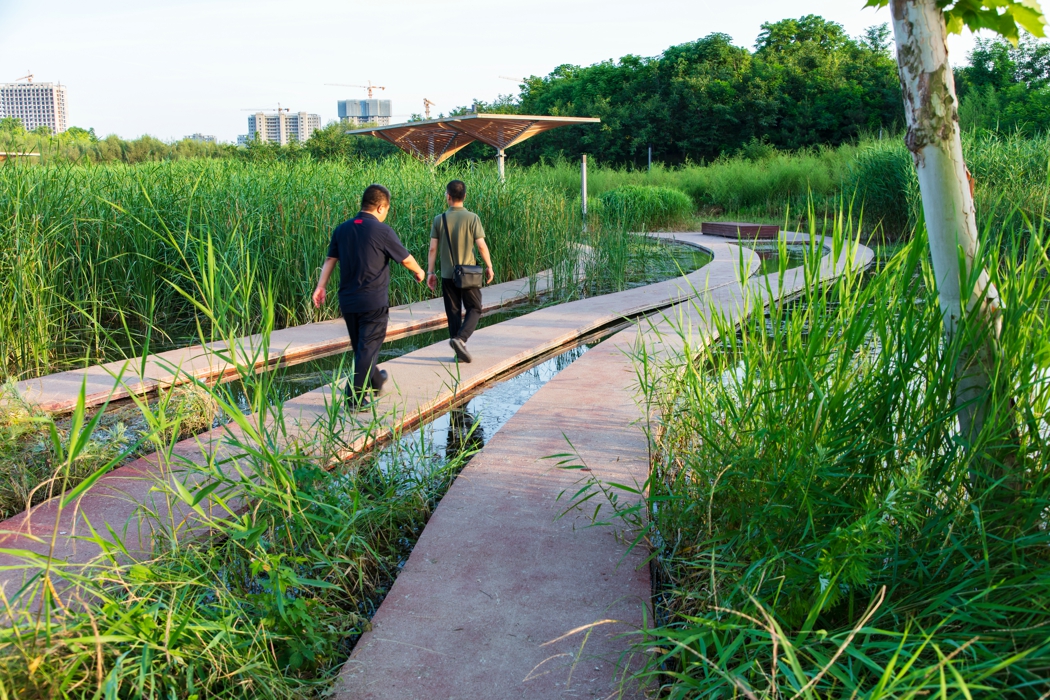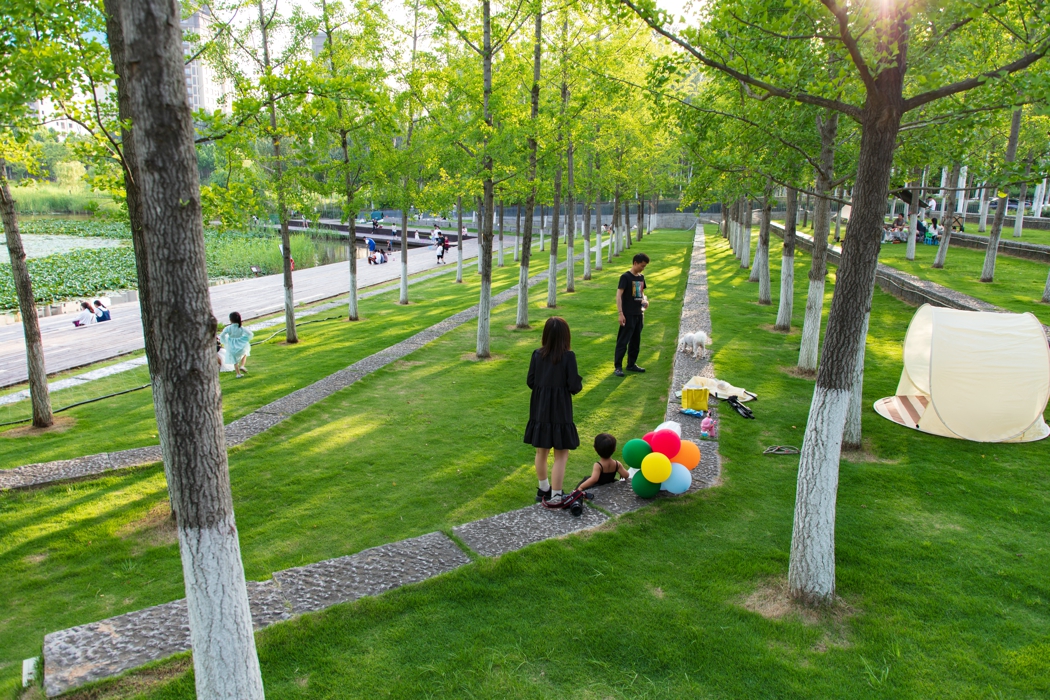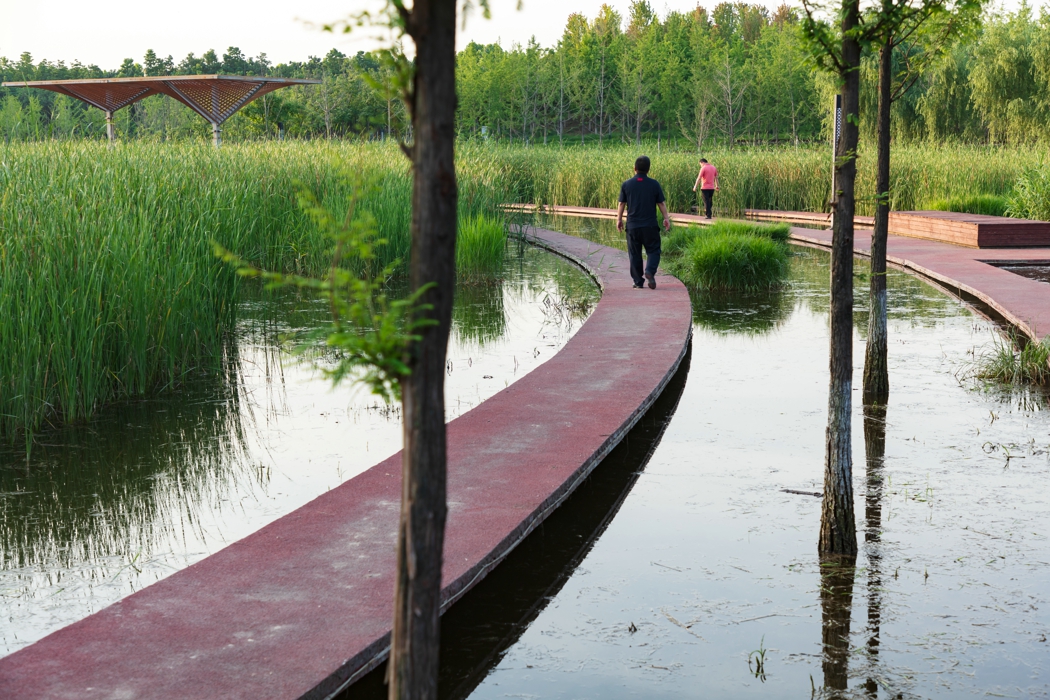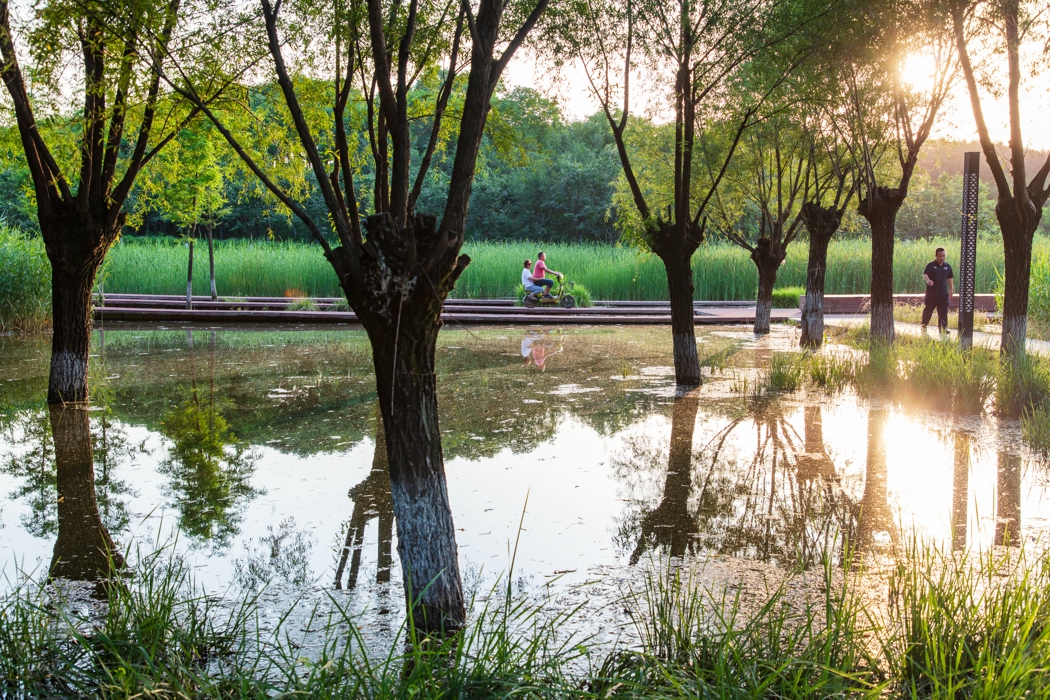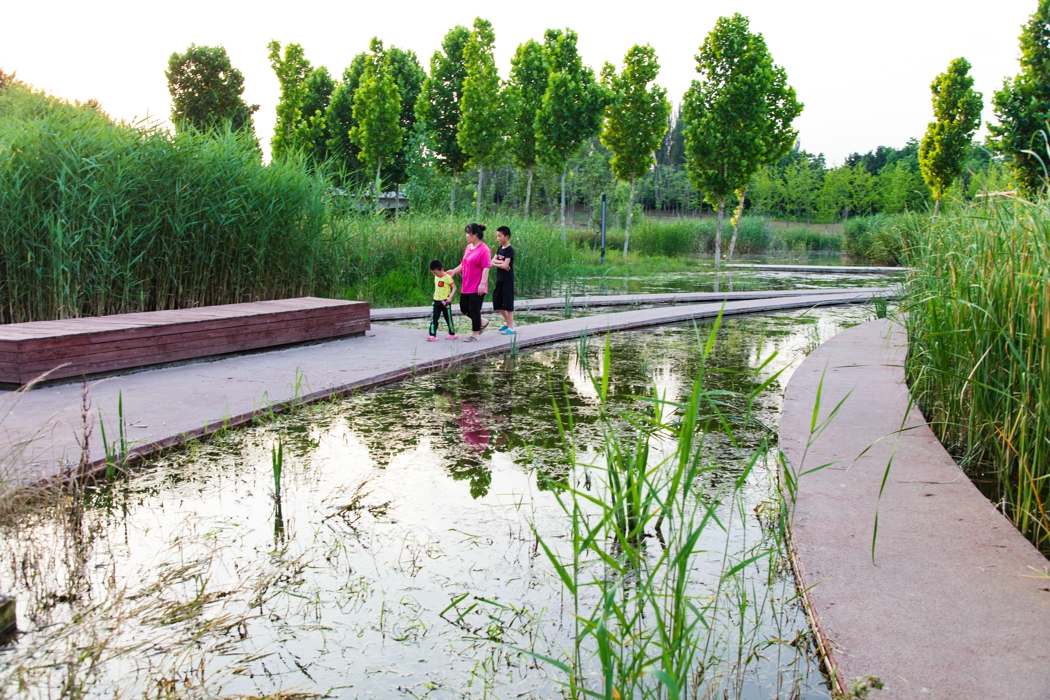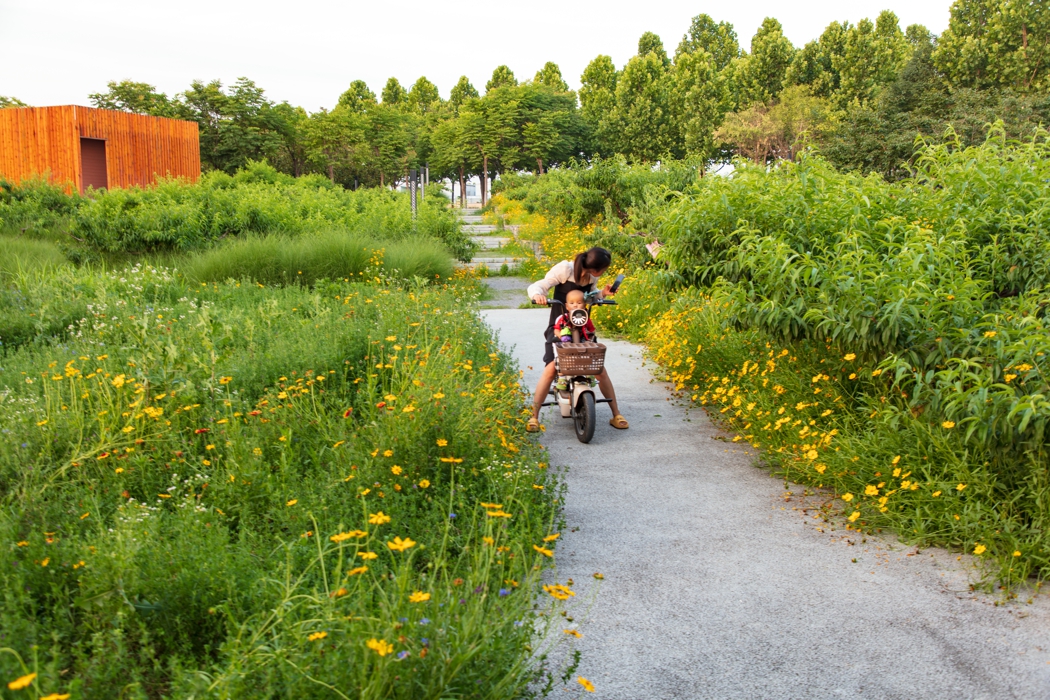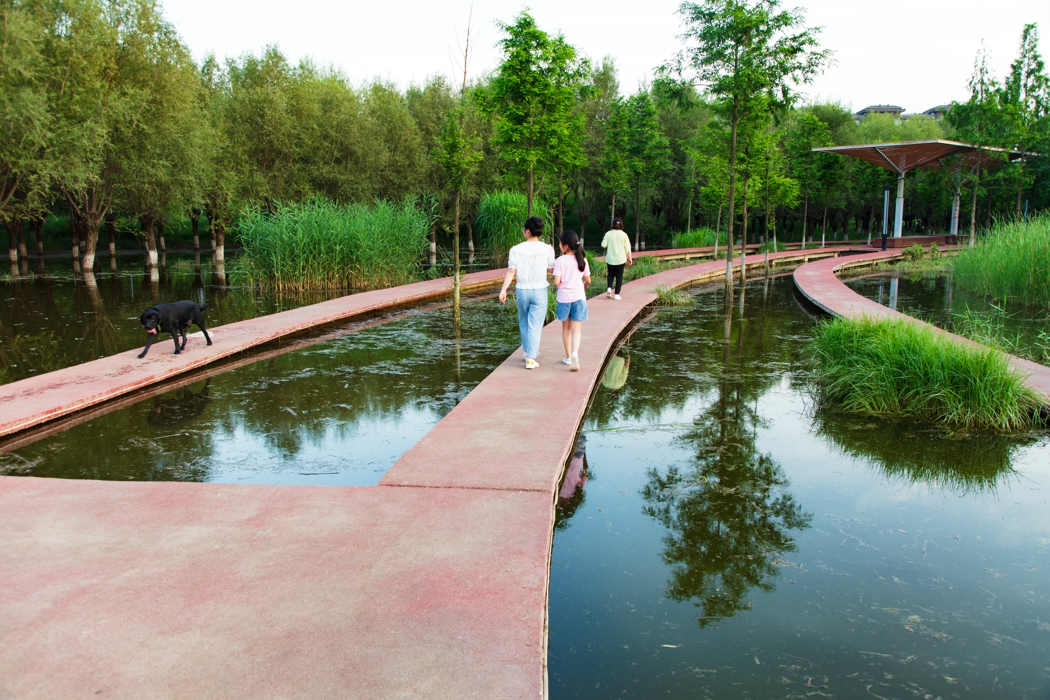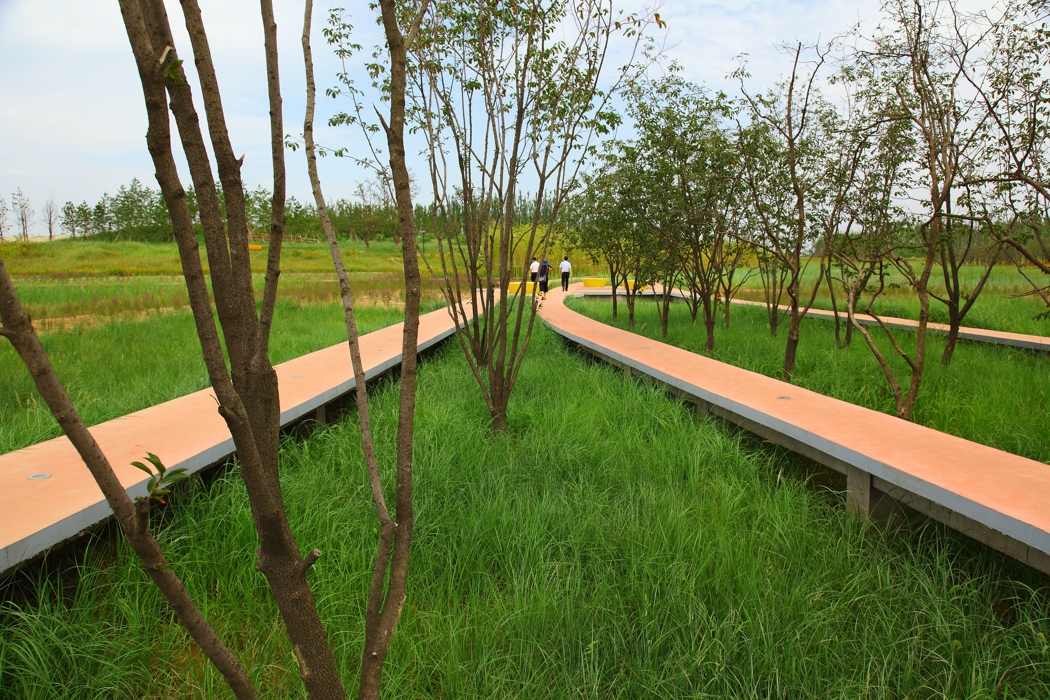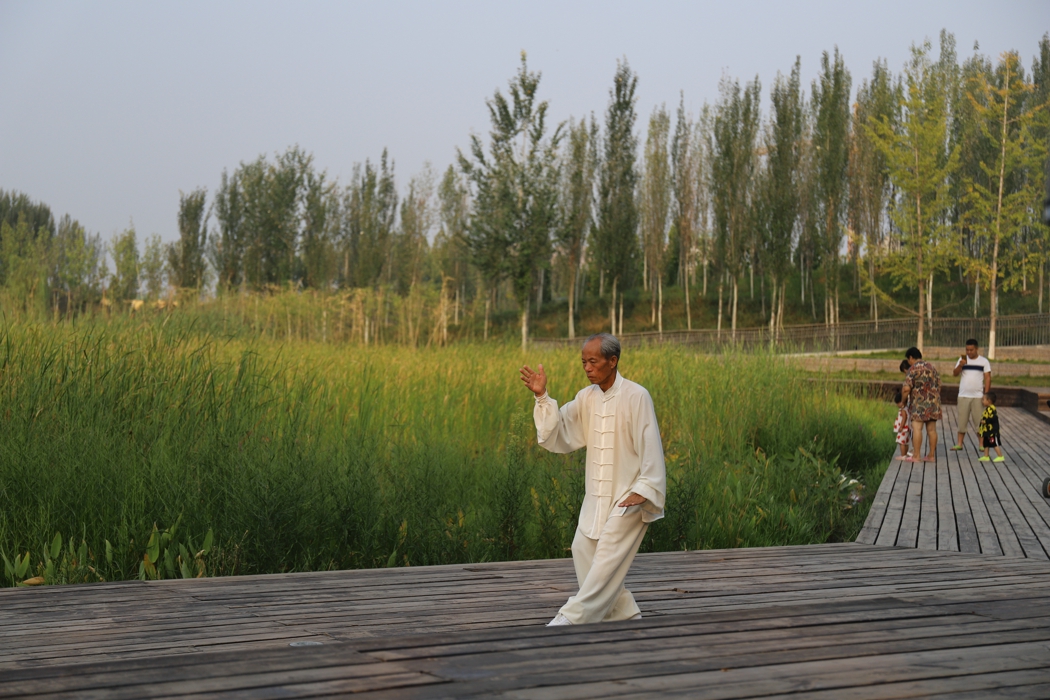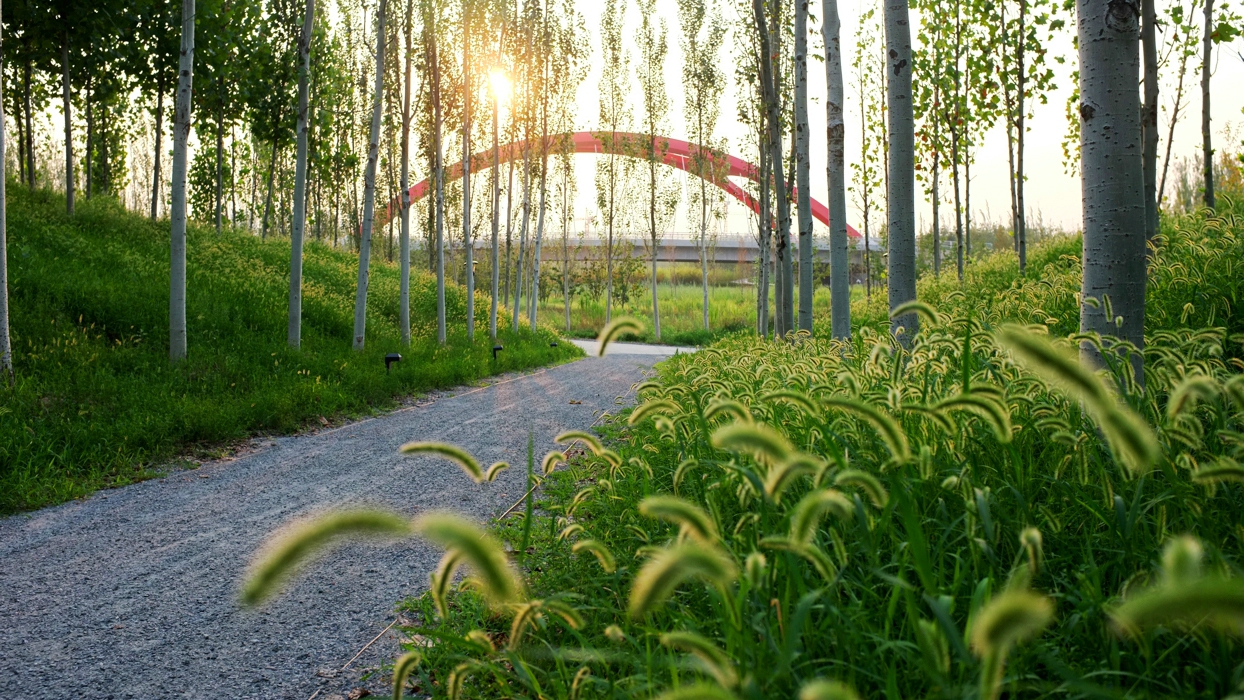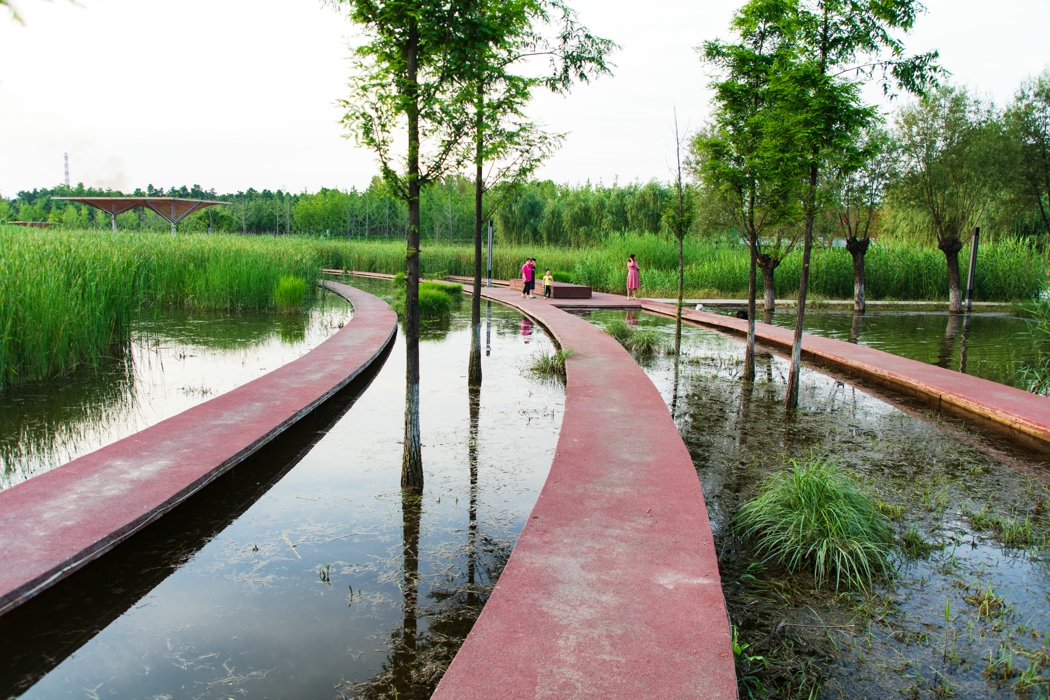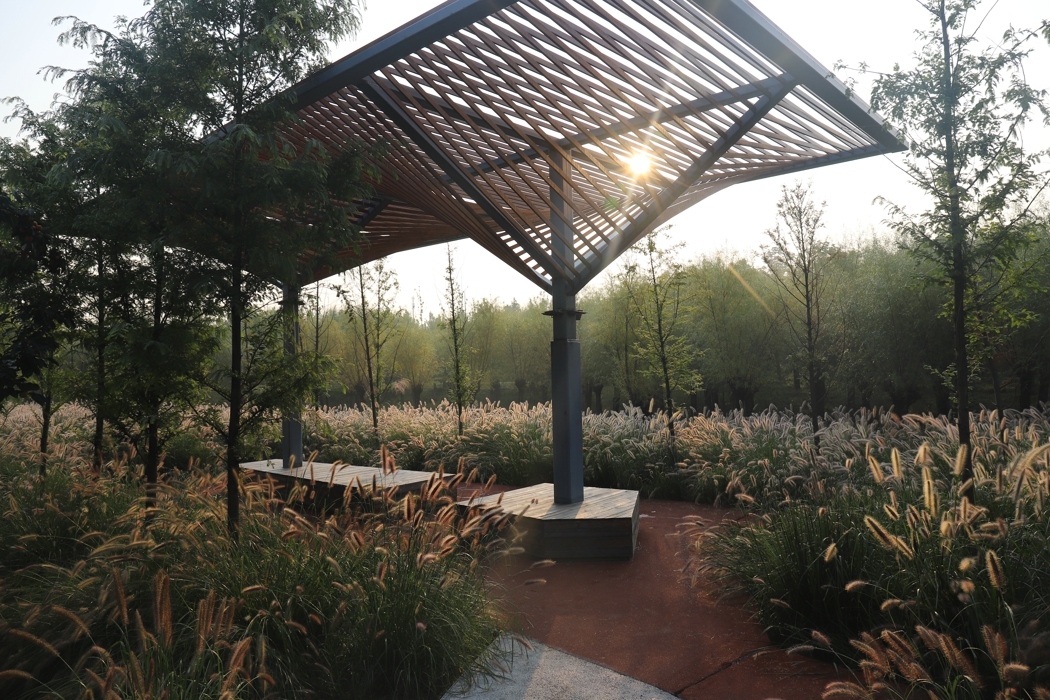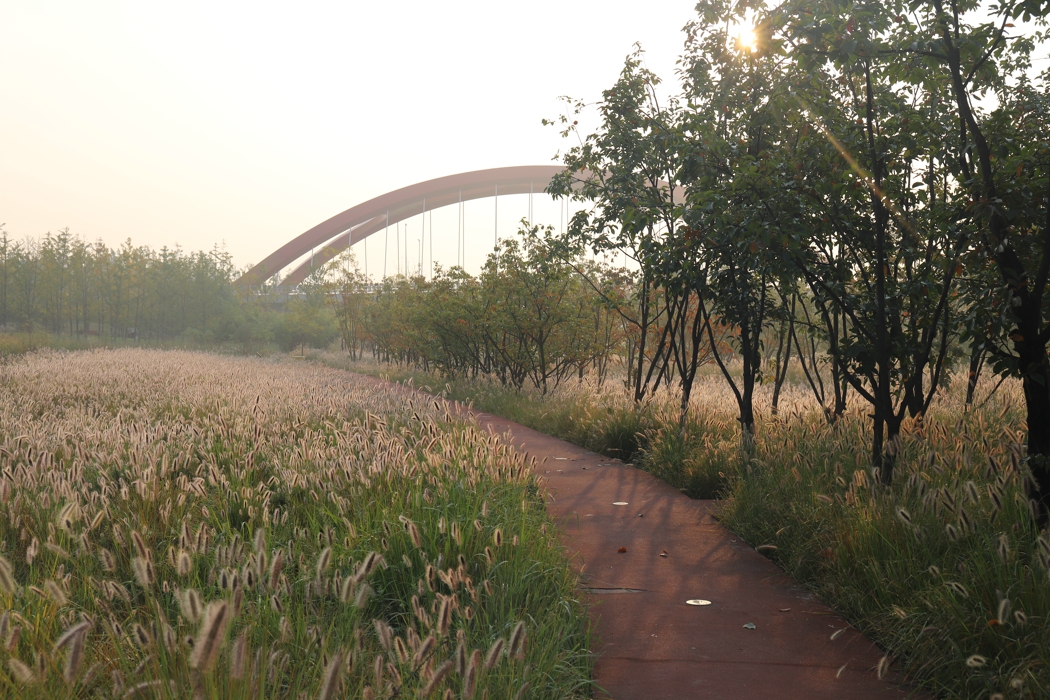Shanxi Fengxi New City Center Green Corridor
Project Information
- Project Location:
- China Fengxi,Shanxi
- Project Scale:
- 23 Hectare
- Design Time:
- June 2013
- Build Time:
- June 2015
Project Profile
1. Project Statement
Fengxi Green Corridor is located in the central part of Fengxi New City in Xixian New Area, with a total length of 7 kilometers and a total area of about 180 hectares. It is connected to the Wei River to the west and the Feng River to the east, and the current land is mainly farmland and villages. According to the layout positioning of the upper planning, the green corridor crosses the core residential, commercial, and cultural areas of the new city, and is an important green corridor in Fengxi New City. The first phase of the 23 hectare Green Corridor project, located in the core commercial area of the city, started construction in 2013 and was completed and opened in June 2015.
2. Objective and Challenge
The terrain of Fengxi New City is flat, and the rainwater system in the city is difficult to organize. In the traditional urban rainwater planning, the core urban area of 25.6 square kilometers is divided into three major rainwater zones. Rainwater converges and concentrates in the rainwater pipelines of each zone, and is then forcibly discharged into the river through pumping stations. This centralized drainage method has three major problems: waste of rainwater resources, huge amount of rainwater facility construction, and high risk of waterlogging.
In order to solve the many problems existing in traditional and gray rainwater infrastructure, we hope to build an ecological sponge system around the green corridor in the design, reorganize the rainwater discharge of the city, and achieve three major goals:
1) Control the total amount of runoff
Utilize green corridors to collect and store rainwater, reducing the annual amount of rainwater discharged from the city by 50% to around 2 million cubic meters; the total annual runoff control rate in the core area of Fengxi New City has reached over 80%.
2) Reduce construction costs
Utilizing the green corridor to form a green rainwater infrastructure, rainwater from surrounding plots is discharged into the nearby green corridor through shallow buried pipes, achieving decentralized drainage, avoiding deep buried pipes, and reducing the construction and maintenance costs of rainwater infrastructure.
3) Reduce the risk of urban waterlogging
Through the construction of greenway, the pressure of urban rainwater pipe network and rainwater pump station will be reduced under rainstorm, the peak runoff will be reduced, and the risk of urban waterlogging will be reduced.
3. Design strategy
1) Urban scale - Adjusting urban rainwater system planning around green corridors
In order to achieve the design goal of the rainwater system, it is necessary to rely on the green corridor to divide the urban rainwater area again: the land adjacent to the green corridor adopts a decentralized drainage method, and the rainwater pipe network directly connects to the green corridor. Daily rainfall converges and infiltrates inside the green corridor; In case of rainstorm, the green corridor can serve as a flood discharge corridor, and the accumulated rainwater is discharged into the Weihe River and Fenghe River through the pump station at the east and west ends of the green corridor. The plot far from the green corridor still uses traditional drainage methods. After rainwater converges, it is forcefully discharged into the river through three pumping stations (during the later regulatory adjustment process, green infrastructure for rainwater has also been planned in the rainwater area far from the green corridor).
By adjusting the planning and fully leveraging the role of green corridors in the urban rainwater system, green corridors are utilized to solve the rainwater drainage problem of nearly 60% of urban plots.
2) Within the site - the functional structure of the green corridor adapted to rainwater collection.
To ensure the collection and utilization of urban rainwater, green corridors need to adopt functional structures that are suitable for their functions. Overall, a spatial structure with sunken green spaces and east-west connectivity is adopted. Sinking green space: Dig about 5 meters below the green corridor to become the low point of the area, and surrounding rainwater can naturally flow into the green corridor. East west connection: in order to cope with extreme rainstorm, the greenway needs to connect the Weihe River and the Fenghe River in the east-west direction to form a continuous flood discharge corridor, and pump stations are set at the east and west ends to ensure that the rainwater in rainstorm can be discharged into the river by the pump station.
On the basis of a reasonable overall spatial pattern, in order to ensure sufficient collection, purification, and utilization of rainwater, three corresponding functional systems have also been set up - Rainwater collection system; Rainwater purification system and Rainwater utilization system.
4. Conclusion
Fengxi Green Corridor integrates and enhances the urban rainwater pipeline system, implementing the concept of sponge city into the site, and constructing the central rainwater corridor of the city. Forming a concave green space in the green corridor can not only collect surface runoff from surrounding plots, but also introduce rainwater from the urban pipeline network. The collected rainwater is filtered, purified, and infiltrated through the green corridor, avoiding the risk of urban waterlogging while replenishing groundwater to form an ecological rainwater system.
